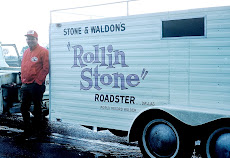Wednesday, September 11, 2013
Huey Helicopter brings back memories
Tuesday I had to make a trip to the Veterans Administration Hospital in Bonham,...a trip I have made many times over the years,..but I discovered something new has been added since my last trip... As I turned into the hospital I noticed an old friend now graces the front lawn of the facility.
This is a UH-1 Iroquois helicopter...It is better known as a Huey, a term hung on it by the ground pounders of Vietnam because no one knew what an Iroquois was. Beginning in the 1950's when the Army decided they were going to have a fleet of helicopters, someone decided they needed a one-name title and the various tribes of native Americans filled the bill. Other choppers are named after the Blackhawk tribe..the Comanche..Chinook.. Sioux..and Cheyenne to name just a few.
Being a Vietnam Veteran, I have had my share of experiences with the Huey helicopter. The above example has the side doors on both sides,..but most of the time in Nam the doors were removed to allow entrance and exit by the most expedient means.
Usually the Huey had a crew of three men (pilot, co-pilot, and crew chief, who doubled as the door gunner) and could carry eight to ten combat ready grunts (Marine or Army). In 1963 the Army converted an entire division into a mobile unit to be called the First Air Cavalry Division. Instead of horses, these cavalry troopers rode into battle in helicopters. Vietnam was the first conflict where entire units were carried to hot spots via the helicopter.
When I first arrived in Vietnam (January 2, 1965) I had to travel from Dak To to Phu Bai in a Huey and it would be the first of many trips in the iron bird. Huey's are made by Bell Helicopter in Fort Worth, Texas and I took it as a good omen. My second day I was introduced to a radio that I would be using (R-390 super-hetrodyne receiver) and it was made by Collins Radio Corporation of Dallas, Texas... Another omen of good luck for me.
The Huey was used in all regions of the Vietnam conflict. I was stationed in the jungle and mountainous regions of northern South Vietnam and when the chopper could not land, we dropped thru the trees on ropes. Sometimes we were inserted into uncharted areas and we made our way back to Phu Bai while making new maps of the local terrain. There is no greater feeling of stark terror than the one when you are dropped into a unknown area and have to sit there while the sound of your only means of transportation fades out in the distance. Anyone who tells you they were not scared is lying.
The new Huey at the Bonham Hospital is not armed...but some of the Huey's brought some serious armament to engagements.
Here is an example of some of the hardware loaded on Hueys.. This particular chopper has not only rocket lancher tubes..but also a remote controlled mini-gun capable to firing three-thousand rounds per minute. When the mini-gun was firing it looked like a continuous stream of red trails right to the target. A thirty caliber machine gun is mounted on a bi-pod for the crew chief to use...and this is just on one side of the Huey,..identical stuff is on the other side. Like I said, the later models were well equipped. A model of the Huey was not armed and had red crosses painted on it. These air ambulances were called 'slicks' but despite the international markings, the Viet Cong and North Vietnamese forces shot them down too.
Subscribe to:
Post Comments (Atom)








No comments:
Post a Comment